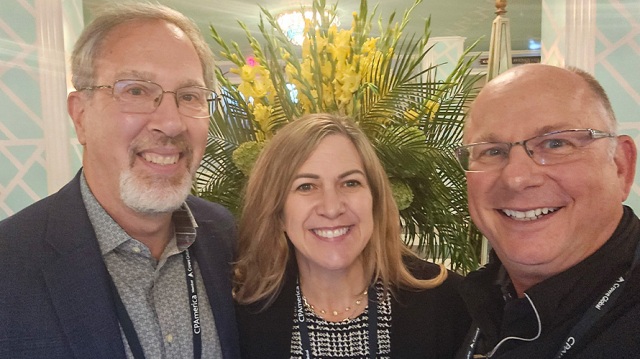Recently, I attended the CPAmerica Leading Partners Retreat held at the Greenbrier in White Sulphur Springs, W.V. Nearly 200 accounting firm leaders attended, all seeking to stay current on innovation and top technology that is impacting the profession. I had the opportunity to speak as the event’s technology keynote, sharing key innovations impacting accounting firms today.
I focused heavily on the importance of developing an “Innovation Mindset” to better enable one to take advantage of the numerous evolving applications that are changing the way that accounting firms operate and interact with clients more effectively.

Learning culture mindset
Quoting AICPA President Barry Melancon, “The rate of change will never be as slow as it is today.” It is so important for accounting firms to integrate a learning culture mindset. Firms need to adapt to the “new normal” technologies facing the accounting profession. And the accounting firms that can quickly identify, install and institutionalize leading technologies will have a significant competitive advantage. This will be bolstered by a comprehensive learning culture, increasing adoption rates of new technologies and production processes within the firms.
Messaging platforms
One standout strategy that evolved during COVID is hybrid work. The reality now is that hybrid work is here to stay. The firms that previously had or quickly moved all their applications in the cloud fared well. And the firms that had all their data in a digital format fared even better than those that did not. With this digital collaboration is another hallmark technology that shined during COVID—messaging platforms for internal communication. I think Microsoft Teams is the most likely long-term winner. This is due to its integration with Office 365, intranet capabilities and cybersecurity strengths.
Technology stack
Another topic I talked about during the keynote was tax and assurance departmental process optimization. It is so important to build both an accounting firm and client-accessible “technology stack” in the cloud. The influx of “modern” applications integrating workflow capabilities into firm processes were resulting in significant gains in efficiency for firms. This includes portals, engagement letter submissions, invoice creation and payment processing.
For building out “client” technology stacks, they are most often built around the “client’s” accounting applications. Recent surveys pointed to QuickBooks Online and QuickBooks Desktop consistently being the most selected by end users. Sage Intacct and Xero were next on the list. Each of these products has an application marketplace. Firms can select accounts payable, receivable, payroll, reporting and other apps that integrate with the client’s accounting product to effectively build out the technology stack.

A layered approach to security
With all the emerging technology and movement to the cloud, integrating layered security practices into the firm’s technology strategy is key to long-term success. What is layered security, exactly? It is the practice of putting business apps in a secure cloud, securing employee devices, and mandating security training for all employees. Essential security tools that all firms should have in place include the use of expanded password rules requiring at least 14 characters, the use of multifactor authentication and recommending the use of password wallets to promote unique passwords for EVERY login. I think I surprised some attendees by noting that all firms filing tax returns via electronic means are required by law to have a Written Information Security Plan (WISP).
Events like CPAmerica Leading Partners Retreat are great opportunities for accounting firm leaders to take time to learn about emerging technologies that are both currently impacting their firms as well as future potential disrupters like blockchain, artificial intelligence, legislation, drones, etc. Stay tuned for more of my thoughts and predictions on those topics.



